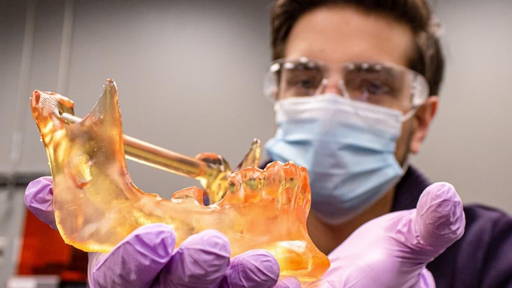Cutting-edge advances in 3D bioprinting, organoids, and organ-on-a-chip systems are redefining how researchers study, detect, and ultimately prevent cancer. Scientists from the Oregon Health & Science University (OHSU) Knight Cancer Institute and partner institutions have published a new review highlighting how these New Approach Methodologies (NAMs) are revolutionizing cancer research by enabling earlier detection and more personalized treatments.
NAMs combine human-relevant technologies such as organoids, lab-grown tissues, organs-on-a-chip, and computational models. These systems replicate key biological processes, offering an unprecedented view into how cancer originates and evolves, without relying on animal testing. “Early detection is one of the most important factors in surviving cancer,” said Prof. Luiz Bertassoni, Ph.D., Director of the Knight Cancer Precision Biofabrication Hub. “These technologies allow us to observe how cancer forms and progresses, paving the way for earlier diagnosis and even predicting disease onset.”
From 3D-printed blood vessels to living tumor models
Nearly a decade ago, Bertassoni’s team earned international recognition for developing a 3D bioprinting technique to create blood vessels, a milestone ranked among the year’s top scientific breakthroughs by Discover Magazine. Today, his group is applying that expertise to bioengineer realistic tumor environments, using chip-based models that accurately mimic how cancer develops within bone and other tissues.
These in-vitro systems enable researchers to recreate the early stages of tumor formation and test how genetic, cellular, and environmental factors influence disease progression. They also support the discovery of new biomarkers. These are early biological warning signs that could help detect cancer before symptoms appear. “This is a really exciting time in cancer research,” said Bertassoni. “We are merging biology, engineering, and clinical treatment in ways that were unimaginable just a few years ago.”
Engineering cancer’s earliest stages
One of the major challenges in oncology has been understanding what happens during the first moments of cancer initiation. Tumor samples are rarely available before the disease becomes symptomatic, leaving a critical knowledge gap. Through advanced tissue engineering and NAMs, scientists can now simulate these early cellular changes in the lab.
Lead author of the review, published in Nature Reviews Bioengineering, Haylie Helms, M.S., a biomedical engineering researcher and fellow of the International Alliance for Cancer Early Detection, is using single-cell 3D bioprinting to study the earliest stages of tumor development. By printing realistic tissue environments and introducing live patient-derived cancer cells, her team can observe how and why some precancerous lesions remain stable while others become aggressive tumors.
“In the lab, we can literally watch how healthy tissue transitions into cancer,” Helms explained. “That allows us to identify the tipping points for intervention.”
Cancer interception
The OHSU team’s work aligns with the growing field of cancer interception, the idea of stopping cancer before it fully forms. By combining 3D bioprinting, organoid technology, and AI-driven modeling, these new methods provide a platform for testing drugs, predicting risk, and tailoring treatments to individual patients.
Ultimately, this convergence of biofabrication, data science, and precision oncology marks a paradigm shift in cancer care: from treating late-stage disease to intervening early and preserving health. “Our goal,” said Helms, “is to understand and treat cancer at the very earliest possible moment, before it ever has the chance to take hold.”







